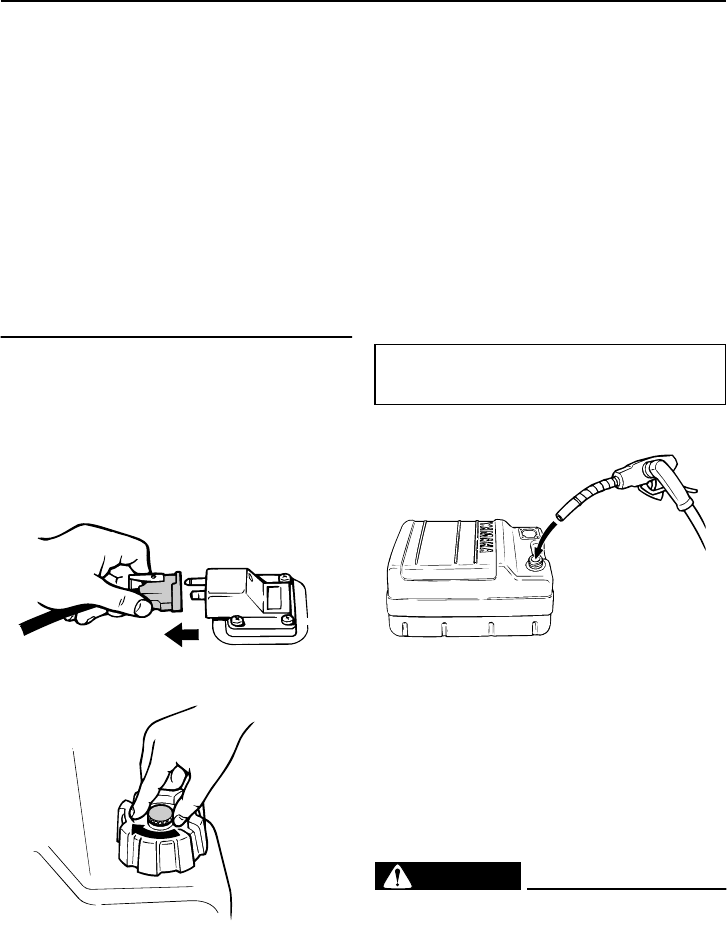
Operation
47
mable and explosive. Always refuel ac-
cording to this procedure to reduce the
risk of fire and explosion.
●
Gasoline is poisonous and can cause
injury or death. Handle gasoline with
care. Never siphon gasoline by mouth.
If you should swallow some gasoline or
inhale a lot of gasoline vapor, or get
some gasoline in your eyes, see your
doctor immediately. If gasoline spills
on your skin, wash with soap and wa-
ter. If gasoline spills on your clothing,
change your clothes.
1. Be sure the engine is stopped.
2. Disconnect the fuel line from the fuel
tank and tighten the air vent screw on
the fuel tank cap.
3. Remove the portable tank from the boat.
4. Be sure you are in a well-ventilated out-
door area, either securely moored or
trailered.
5. Do not smoke and keep away from
sparks, flames, static electric discharge,
or other sources of ignition.
6. If you use a portable container to store
and dispense fuel, use only an approved
GASOLINE container.
7. Touch the fuel nozzle to the filler open-
ing or funnel to help prevent electrostatic
sparks.
8. Fill the fuel tank, but do not overfill. Fuel
can expand and overflow if the tempera-
ture increases.
9. Tighten the filler cap securely.
10. Wipe up any spilled gasoline immediate-
ly with dry rags. Dispose rags properly
according to local laws or regulations.
EMU27451
Operating engine
EMU27466
Sending fuel (portable tank)
WARNING
EWM00420
●
Before starting the engine, make sure
that the boat is tightly moored and that
you can steer clear of any obstructions.
Be sure there are no swimmers in the
ZMU06598
ZMU02301
Fuel tank capacity:
24 L (6.34 US gal, 5.28 Imp.gal)
ZMU02834


















